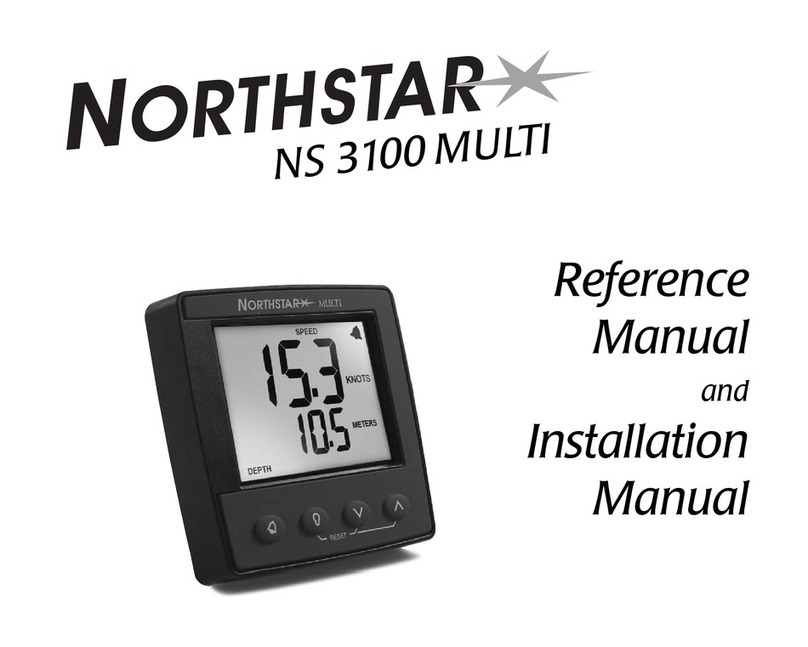9
Reference Manual and Installation Manual
4 Systems of several instruments
Several Northstar instruments can be connected together to share data. There are two ways of connecting
instruments together, NavBus or NMEA.
NavBus is a Northstar proprietary system that
allows systems of multiple instruments to be
built using a single set of transducers. When
instruments are connected by NavBus:
If you change the units, alarms or calibration
in one instrument, then the values will
automatically change in all other instruments
of the same type
Each instrument can be assigned to a group
of instruments (see section 6-2, step 2). If
you change the backlight in an instrument
in group 1, 2, 3 or 4 then the backlight will
automatically change in the other instruments
in the same group. If you change the backlight
in an instrument in group 0 then no other
vinstruments are affected.
If an alarm sounds, mute it by pressing on
any instrument which can display that alarm.
NMEA is an industry standard, but is not as flexible as NavBus as it requires dedicated connections between
instruments. Depth data is output by the NS3100 DEPTH and can be read and displayed by the Northstar MULTI
3100 or other NMEA instrument.
4-1 NavBus
NavBus and the NS3100 DEPTH
If the NS3100 DEPTH does not have a depth transducer
fitted then the unit will automatically take depth readings
from another instrument, via NavBus, if the data is
available. For more information, refer to the NavBus
Installation and Operation manual.
Note: If a transducer is not fitted to the unit and the
corresponding external data is not available then the
displayed value will be dashes (— —).
4-2 NMEA
































